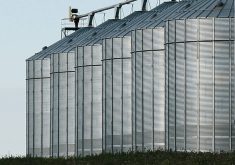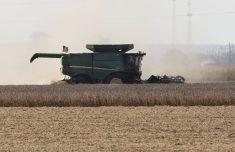Winnipeg – Some harvest operations have begun in Saskatchewan.
In the southern regions of the province, some combining of winter cereals had been done as of August 11, according to the latest crop report from the provincial agriculture ministry.
Across the province, pulses were being desiccated and canola was being swathed.
Many crops are starting to turn and general harvest work is expected to begin in the coming weeks, according to the report. Warm weather during the week helped crop development, though more warm weather will be needed headed into harvest as crops are 10 days to two weeks behind normal in many areas.
Read Also

Grain trader Bunge lowers 2025 profit forecast after closing Viterra deal
U.S. grain trader and processor Bunge on Wednesday lowered its 2025 earnings forecast following its merger with Viterra, and said it is overhauling segment and volume reporting to align with its integrated operations.
Haying progress is varied across the province, with some producers facing problems due to swathed hay drying too slowly. Estimated dry land hay yields are reported as 1.5 tons per acre for alfalfa, one ton per acre on wild hay and two tons per acre on greenfeed. Irrigated land yields were 2.4 tons per acre on alfalfa, 1.8 tons an acre on wild hay and 2.6 tons per acre for greenfeed.
Rainfall during the week ranged from trace amounts to several inches in some parts in the southern and central regions. Provincial topsoil moisture on cropland was rated as five percent surplus, 85 percent adequate, nine percent short and one percent very short.
Hay land and pasture topsoil moisture was four percent surplus, 80 percent adequate, 15 percent short and one percent very short.
There were some damaging storms that passed through the province during the week that brought heavy rain, strong winds and large hail. Grasshoppers and lygus bugs were also causing some damage. Farmers also reported problems caused by leaf spot diseases and fusarium head blight.














